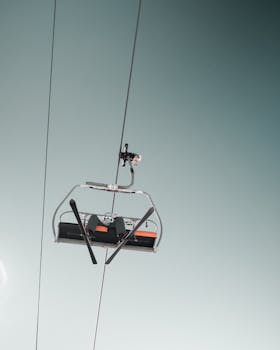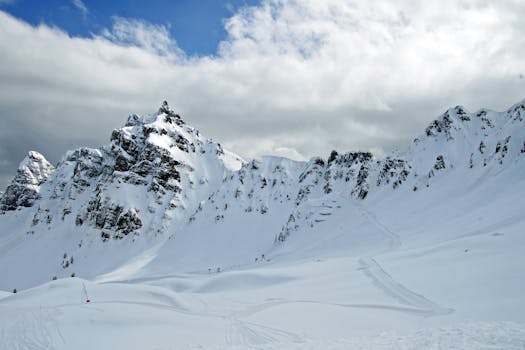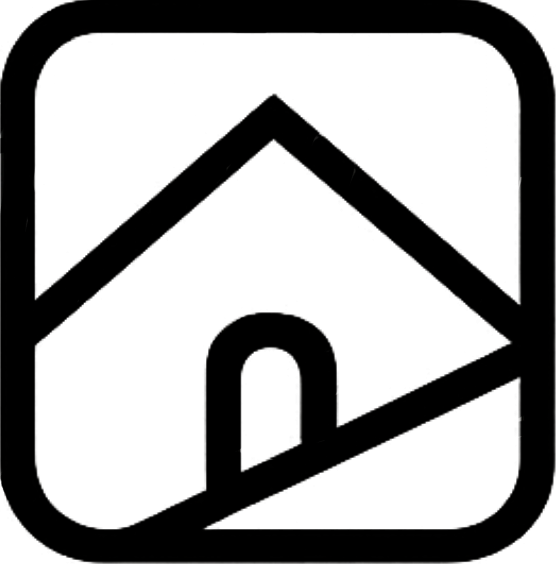Telluride Ski Resort: Complete Guide (2025)
Everything you need to know about Telluride Ski Resort: terrain breakdown, lift system, best runs, ticket prices, expert tips, and how it compares to other Colorado resorts.

Telluride Ski Resort: Complete Guide (2025)
Telluride Ski Resort spans 2,000 acres across 4,425 vertical feet of the San Juan Mountains, offering 127 named trails serviced by 19 lifts including the free gondola connecting town to Mountain Village. What distinguishes Telluride from Colorado’s megaresorts isn’t sheer size—Vail, Breckenridge, and others claim more acreage—but rather the combination of challenging expert terrain, remarkably sparse crowds even during peak season, stunning scenery at every turn, and authentic mountain town character at the base rather than manufactured village atmosphere.
This complete guide covers everything you need to navigate and enjoy Telluride: detailed terrain breakdown by ability level, lift system operation and efficiency, specific run recommendations for every skill level, ticket options and pricing strategies, optimal seasonal timing for different conditions, and insider tips that locals use to maximize their mountain experiences. Whether visiting for the first time or returning for another season, understanding the resort’s layout and characteristics transforms your skiing from good to exceptional.
 Photo by Luca Nardone via Pexels
Photo by Luca Nardone via Pexels
For specific skiing techniques and ability-appropriate strategies, see our complete skiing guide for Telluride. To plan your visit timing around snow conditions and crowds, check our ski season guide. For slope-side accommodations, review our best hotels in Telluride.
Note: Resort statistics, lift operations, and trail information reflect current season data. Always verify specific details, operating hours, and conditions with the official Telluride Ski Resort website before your visit.
Resort Statistics and Overview
Telluride Ski Resort climbs from 8,725 feet base elevation in downtown Telluride to 13,150 feet at the Gold Hill summit, creating 4,425 vertical feet of skiing—ranking eighth highest in North America. The Mountain Village base sits at 9,500 feet, while Palmyra Peak extends to 13,320 feet for those willing to hike. The resort receives approximately 131 inches of average annual snowfall, less than some northern Colorado resorts but benefiting from drier, lighter snow quality due to its southern San Juan location.
The 2,000 skiable acres spread across multiple distinct zones: the Front Side facing downtown with groomed cruisers and tree skiing, the Back Side or Gold Hill area with wide-open bowls and challenging steeps, and the Prospect area providing beginner and intermediate terrain. The 127 named trails divide into roughly 23% beginner (green), 36% intermediate (blue), and 41% advanced/expert (black/double-black)—a terrain distribution that clearly identifies Telluride as an advanced skier’s mountain while still accommodating other ability levels.
Nineteen lifts service the terrain, including high-speed detachable quads, fixed-grip chairs, and the free gondola running year-round between downtown and Mountain Village. The lift capacity and terrain layout create remarkably uncrowded conditions even during holiday periods when other resorts suffer hour-long lift lines. You’ll rarely wait more than 5-10 minutes for any chair, and most weekday mornings see lift-on access with zero wait.
Terrain Breakdown by Zone
The Front Side
The Front Side encompasses terrain directly facing downtown Telluride and the box canyon, accessible from the Coonskin and Plunge lifts. This zone provides diverse skiing from groomed cruisers to steep tree runs, with predominantly north-facing aspects holding powder longer than sun-exposed areas. The See Forever area at the top delivers spectacular views down-canyon toward Wilson Peak and the surrounding 13,000-foot summits.
Intermediate skiers love the wide groomed runs like See Forever and Misty Maiden, which provide confidence-building cruising with sustained pitches allowing speed without intimidating steepness. Advanced skiers dive into the Plunge area’s steep bump runs and tree skiing through aspens and evergreens. The trees here provide protection from wind and flat light while creating natural playgrounds for powder days.
The Apex section reached via Chair 10 offers varied terrain from mellower blues to legitimate double-black chutes. The relatively short lift ride encourages lapping runs to dial in technique or chase fresh snow. This area sees less traffic than the main mountain, making it a local favorite for uncrowded skiing even on busy weekends.
Gold Hill (The Back Side)
Gold Hill represents Telluride’s expert terrain showcase, featuring wide-open bowls, sustained steep pitches, and the highest elevations on the mountain. Chair 12 accesses Gold Hill, climbing to 13,150 feet and opening expansive terrain visible from throughout the resort. The views from the summit rival anywhere in North America, with unobstructed 360-degree vistas of the San Juan Range.
The terrain here demands strong skiing ability—steep sustained pitches with consequences for mistakes, high-altitude exertion, and exposed conditions during storms. However, the rewards include some of Colorado’s best in-bounds advanced skiing, with 1,500+ vertical feet of steep fall-line skiing from summit to valley floor. The multiple bowls and aspects mean you can usually find good snow conditions somewhere on Gold Hill regardless of wind direction or sun exposure.
Advanced intermediates can sample Gold Hill via the less-steep blue runs accessing the area, experiencing the expansive views and bragging rights without committing to double-black terrain. However, recognize that blue runs here ski more like blacks elsewhere due to altitude, pitch, and exposure. Skiing Gold Hill on your first Telluride day sets up potential disappointment; save it for later in your trip after acclimatizing to altitude and building confidence on easier terrain.
 Photo by Gustav Lundborg via Pexels
Photo by Gustav Lundborg via Pexels
Prospect and The Meadows
The Prospect area serves as Telluride’s beginner and lower-intermediate zone, with wide-open terrain, gentle sustained pitches, and isolation from advanced skier traffic. Lift 9 (Prospect Express) services this area, providing efficient access without the intimidation of riding chairs over steep terrain. The Meadows specifically functions as the primary learning area, with magical carpet loading for first-timers and wide spaces for practicing basics.
Families appreciate this zone’s consolidated layout and separated location from faster traffic. Kids can ski the same area repeatedly without parents worrying about collisions with aggressive skiers. The terrain provides enough variety to entertain beginners for full days while building skills before venturing to more challenging areas.
However, strong intermediates and above will bore quickly in Prospect, as the terrain lacks challenge beyond basic turns. This area serves a specific purpose—teaching beginners and providing mellow skiing—rather than attempting to satisfy all ability levels. First-time visitors should note that Prospect represents only a fraction of Telluride’s terrain, and the challenging reputation comes from the other 75% of the mountain.
Revelation Bowl
Revelation Bowl extends Telluride’s skiable terrain with a separate backcountry-style area accessed via a short hike from Chair 12. This terrain opened in recent seasons, adding expert-level bowls and chutes without requiring backcountry equipment or avalanche awareness. The area operates with ski patrol control, meaning it’s avalanche-mitigated and within resort boundaries despite the hike access.
The bowl provides legitimate expert terrain—steep faces, cliff exposure, and sustained pitch—in a controlled environment. Hike times range from 10-25 minutes depending on conditions and your chosen entrance point. The reward includes untracked powder days after storms when the front-side terrain gets tracked out, and wide-open faces allowing creative line choices.
Revelation Bowl operates conditionally based on snow stability and weather. The area may close for days or weeks following storms while patrol performs avalanche control and stability testing. Check the daily trail report before hiking, and recognize that the effort may be wasted if you arrive to find the area closed.
Lift System
The gondola connecting downtown Telluride to Mountain Village operates year-round and free of charge, functioning as both resort lift and public transportation. The 13-minute ride climbs 1,700 vertical feet while providing spectacular views. During ski season, the gondola runs from approximately 7:00 AM to midnight, allowing early uploa uploading and evening descent to town. This represents North America’s only free public gondola and stands as Telluride’s signature feature.
Chair 10 (Village Express) serves as the main Mountain Village base lift, accessing mid-mountain terrain efficiently with high-speed detachable technology. This four-person chair sees heavy morning traffic as skiers upload from Mountain Village. Strategic timing—arriving at 8:30 AM rather than 9:15 AM—avoids the worst queues.
Chair 12 (Revelation) provides access to Gold Hill’s expert terrain and Revelation Bowl. This fixed-grip triple chair moves slower than high-speed quads, but the ride provides spectacular views and anticipation-building time before dropping into challenging terrain. The chair typically experiences lighter traffic than lower-mountain lifts despite servicing popular terrain.
The Plunge and Coonskin lifts (Chairs 4 and 5) serve the Front Side, providing efficient laps on that zone’s varied terrain. Both operate as fixed-grip chairs with moderate capacity. The shorter ride times enable quick laps for powder chasing or working specific runs repeatedly.
Multiple surface lifts and learning area conveyors serve beginner zones and terrain parks. These provide appropriate technology for learning areas without overbuilding expensive infrastructure where it’s unnecessary.
Signature Runs and Must-Skis
For Beginners
Dipsy Doodle provides Telluride’s longest green run, winding from mid-mountain to the Meadows area with gentle sustained pitch perfect for building confidence. The run’s length allows beginners to experience real mountain skiing rather than just learning area loops, creating accomplishment and progression.
The Meadows and Sundance runs offer wide-open spaces for practicing fundamental skills without narrow tree-lined confines creating intimidation. The consistent pitch eliminates surprise steep sections that rattle beginners’ confidence.
For Intermediates
See Forever ranks as Telluride’s signature intermediate cruise, stretching from summit areas to valley floor with perfect grooming, beautiful sustained pitch, and spectacular views justifying its name. The run accommodates speed when desired while remaining forgiving enough for sketchy intermediate technique. Skiing See Forever on a bluebird morning provides one of Colorado’s quintessential ski experiences.
Misty Maiden offers similar cruising appeal with slightly mellower pitch, making it ideal for building confidence before attempting steeper terrain. The wide-open grooming and consistent fall line help intermediates work on carving and speed control.
Kant-Mak-M Run, despite the intimidating name, delivers excellent intermediate skiing with fun rolling terrain and tree options for those wanting to explore off-piste skiing in a forgiving environment.
For Advanced Skiers
The Plunge itself—the run giving Chair 4 its name—provides sustained steep bump skiing through trees and open sections. This classic fall-line run tests technique, builds stamina, and delivers the satisfaction of conquering one of Telluride’s original challenging runs. Most locals consider skiing the Plunge competently a benchmark for calling yourself an advanced skier here.
Spiral Stairs accesses expert tree skiing through tight aspens and evergreens with sustained pitch and natural features. The run demands precise turns, line selection, and commitment. Powder days transform Spiral Stairs into magical tree skiing, though the tight spacing requires control and vision.
Milk Run area offers multiple double-black options with your choice of steep open faces, tighter trees, or natural gullies. This zone provides variety within the expert category, allowing you to session different lines and features while staying in one general area.
For Experts
The Palmyra Peak hike-to terrain extends Telluride’s most extreme skiing, requiring a 20-30 minute bootpack from the top of Chair 12 to the 13,320-foot summit. Multiple chutes dropping from the summit provide legitimate extreme skiing—sustained 45+ degree pitches, cliff exposure, and commitment once you’re in. This terrain demands expert-level skiing ability, high-altitude fitness, and good judgment about snow stability.
 Photo by Pixabay via Pexels
Photo by Pixabay via Pexels
Black Iron Bowl within Gold Hill provides wide-open expert skiing without Palmyra’s hike requirement. The sustained 1,000+ vertical feet of steep skiing, multiple entrance options, and various lines make this a go-to zone for strong skiers. The bowl holds powder well after storms, and its multiple aspects usually offer good snow somewhere regardless of sun and wind conditions.
Lift Tickets and Pass Options
Single-day lift tickets at Telluride range from $180-220 depending on season and advance purchase timing. Multi-day tickets deliver progressive discounts, with three-day tickets reducing daily cost to $160-180 per day. Buying online in advance saves $20-40 per ticket compared to window prices, making pre-planning worthwhile for budget-conscious skiers.
The Ikon Pass includes seven days at Telluride on the base pass and unlimited on the full pass, making Ikon the standard pass choice for Colorado Front Range skiers visiting Telluride multiple times per season. The pass cost of $729 base/$1,249 full pays for itself quickly compared to daily ticket prices.
The Telluride season pass provides unlimited skiing for roughly the cost of ten daily tickets, making it compelling for anyone skiing Telluride 10+ days annually. However, the pass doesn’t grant reciprocity at other resorts, limiting its appeal for those wanting variety across multiple mountains.
Youth (ages 6-12) and senior (70+) discounts reduce ticket prices by roughly 30-40%. Children five and under ski free everywhere in Colorado by state law. These family discounts make Telluride more accessible for multigenerational trips despite premium base pricing.
Best Times to Visit
Mid-January through mid-February provides Telluride’s optimal skiing conditions—deep snow coverage, cold temperatures producing quality powder, full terrain access, and manageable crowds outside MLK and Presidents Day weekends. For detailed monthly breakdowns, see our complete ski season guide.
Early December offers strong value with adequate snow (usually), very light crowds, and moderate pricing on both tickets and lodging. Late March delivers spring skiing conditions with warm temperatures, corn snow, and thin crowds as the season winds down.
Avoid Christmas week and Presidents Day week if possible, as these periods bring peak pricing, unusual crowding for Telluride, and less optimal skiing experiences despite adequate snow conditions.
Comparison to Other Colorado Resorts
Telluride offers more challenging terrain percentage than Breckenridge or Keystone but less total acreage. The uncrowded conditions surpass Vail, Breckenridge, and Copper on comparable days, with Telluride rarely experiencing the 30-60 minute lift lines common at Front Range resorts during weekends and holidays.
The authentic town base provides character that manufactured resort villages at Vail, Beaver Creek, or Copper cannot replicate. However, Telluride’s remote location (330 miles from Denver versus 70-100 miles for I-70 resorts) limits accessibility for day trippers and short weekend visitors.
Snow quality at Telluride often exceeds northern resorts during the same storms, as the southern San Juan location produces drier, lighter snow. Total snowfall averages lower than some resorts, but quality trumps quantity for skiing experience. The combination of steep terrain, light crowds, and quality snow creates experiences comparable to heli-skiing at resort prices.
Insider Tips
Arrive at lifts by 8:30 AM to upload ahead of 9:00-9:30 AM crowds. This 30-minute difference grants you first tracks on groomed runs or recently opened powder stashes. Ski the Front Side mornings when grooming is fresh, then move to Gold Hill for afternoon sun-softened snow on its south-facing aspects.
Download via the gondola to downtown for lunch rather than eating at Mountain Village resort restaurants. You’ll save money and experience superior food quality at downtown restaurants. The 13-minute gondola ride both directions adds 30 minutes total but delivers better dining and lower costs.
Check the snow report at 6:00 AM for overnight snowfall totals and newly opened terrain. Revelation Bowl and other controlled areas often open mid-morning after patrol work, rewarding those who check updates throughout the day rather than just once at opening.
Weekdays in January and February provide the best combination of conditions, terrain access, and minimal crowds. Presidents Day week should be avoided despite excellent snow, as crowds surge and lift lines appear.
For planning your complete Telluride trip including accommodations and activities, explore places to stay near the slopes and our guide to Telluride activities for non-skiing days and evenings.
Find Your Perfect Place to Stay
Browse our curated selection of ski-in/ski-out lodging, luxury resorts, and budget-friendly options.
Browse Places to StayRelated Articles

15 Best Hotels in Telluride: Top Places to Stay (2025)
The 15 best hotels in Telluride for 2025: luxury ski-in/ski-out properties, boutique downtown hotels, and budget-friendly options. Find your perfect mountain accommodation.

Telluride Ski Season: When to Visit & What to Expect (2025)
Everything about Telluride's ski season: opening and closing dates, monthly conditions, crowd patterns, pricing, snow totals, and the best times to visit for powder, value, or avoiding crowds.

Telluride Skiing: Complete Guide for All Skill Levels (2025)
Everything you need to ski Telluride successfully: ability-specific strategies, altitude management, equipment recommendations, lesson options, safety tips, and insider techniques.
